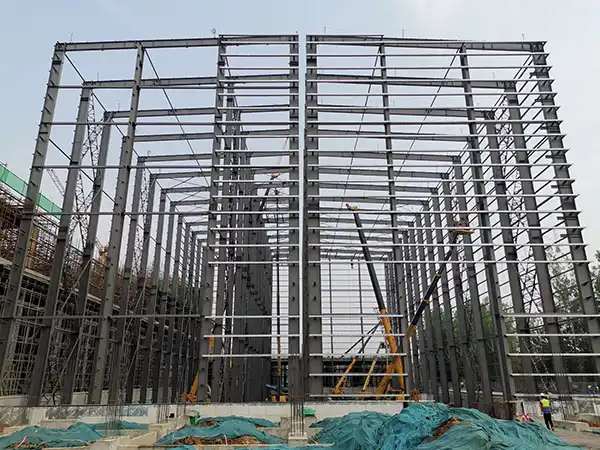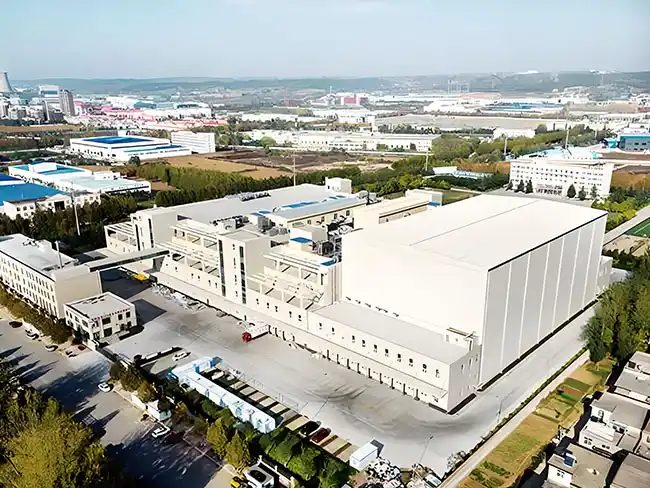A steel structure cold storage system is a complex system, consisting of three core components: the insulation system (the storage unit), the refrigeration system, and the structural system (the steel structure). Regular and professional maintenance not only:
Ensures cooling efficiency and significantly reduces operating electricity costs.
Extends the lifespan of all equipment, reducing overall costs.
Guarantees the quality and safety of stored goods.
Prevents major failures such as structural damage and refrigerant leaks.
Eliminates safety hazards and ensures personnel safety.
Neglecting maintenance can lead to soaring energy consumption, premature equipment failure, and even uncontrolled storage temperatures, resulting in significant cargo damage.

Temperature Monitoring:
Verify that internal temperatures are within the specified range for the stored products.
Check for any unusual fluctuations.
Ensure all temperature sensors and alarms are functioning correctly.
Door Seals and Closures:
Inspect all doors (personnel and large loading doors) for proper sealing.
Look for cracks, tears, or hardening in gaskets and seals.
Ensure doors close completely and latch securely to prevent thermal leakage.
Lighting:
Check that all internal and external lights are working.
Replace any burnt-out bulbs promptly.
Floor Condition:
Inspect for any cracks, damage, or unevenness, especially in high-traffic areas.
Ensure floors are clean and free of ice or debris that could cause slips or equipment damage.
Condensation/Ice Buildup:
Monitor for excessive condensation on walls, ceilings, or equipment, which can indicate insulation problems.
Check for ice buildup around doors or on evaporator coils.
Equipment Noise/Vibration:
Listen for unusual noises or vibrations from refrigeration units, fans, or compressors.
Refrigeration System Inspection:
Condenser Coils: Clean condenser coils to ensure efficient heat rejection. Dust and debris can significantly reduce efficiency.
Evaporator Coils: Check for ice buildup and defrost if necessary. Ensure proper airflow.
Fan Motors: Lubricate fan motors if required and check for excessive wear on belts (if applicable).
Refrigerant Levels: Have a qualified technician check refrigerant levels. Low levels can indicate leaks and reduce efficiency.
Drainage: Ensure condensate drains are clear and free of blockages.
Structural Integrity (Visual Steel Inspection):
Inspect steel columns, beams, and bracing for any signs of corrosion, rust, or damage. Pay close attention to connections and welds.
Look for any deformation or bending of structural members.
Corrosion Protection: Check the condition of any protective coatings (paint, galvanization) on the steel structure. Touch up or repair as needed.
Insulation Panels:
Inspect wall, ceiling, and floor insulation panels for any damage, punctures, or delamination.
Check for gaps in seams where cold air could escape or warm air could enter.
Ensure vapor barriers are intact.
Electrical Systems:
Check electrical panels, wiring, and conduits for any signs of wear, damage, or overheating.
Test emergency stop buttons and safety interlocks.
Ensure all electrical connections are secure.
Safety Equipment:
Test emergency alarms, panic buttons, and communication systems.
Inspect fire extinguishers and ensure they are easily accessible and charged.
Check first-aid kits and replenish as needed.
Pest Control:
Look for any signs of pest intrusion (rodents, insects) and address immediately.

Comprehensive Refrigeration System Overhaul:
Full diagnostic check of compressors, condensers, evaporators, and control systems.
Calibration of thermostats and sensors.
Check for refrigerant leaks and repair as necessary.
Inspect and clean all coils thoroughly.
Verify the functionality of defrost cycles.
Detailed Structural Assessment:
A structural engineer should conduct a thorough inspection of the steel frame, including connections, welds, and foundations.
Assess for any signs of settlement, stress, or fatigue.
Inspect for internal corrosion, especially in areas prone to condensation or moisture.
Roof Inspection:
Check the roof membrane for punctures, tears, or deterioration.
Inspect flashing, gutters, and downspouts for blockages or damage.
Ensure proper drainage to prevent water accumulation.
Foundation Inspection:
Inspect the building's foundation for cracks, settlement, or water ingress.
Ensure perimeter insulation is intact.
Electrical System Audit:
A qualified electrician should perform a detailed inspection of the entire electrical system, including load balancing and circuit integrity.
Test all protective devices (RCDs, circuit breakers).
Inspect backup power systems (if applicable).
Door and Dock Leveler Service:
Lubricate and adjust all moving parts of doors and dock levelers.
Replace worn components like rollers, hinges, and springs.
Test safety features.
Emergency Systems Test:
Conduct a full test of emergency lighting, exit signs, and fire suppression systems.
Documentation Review:
Review all maintenance logs, equipment manuals, and warranty information.
Update maintenance schedules and procedures as needed.
Maintain Records: Keep detailed logs of all inspections, maintenance activities, repairs, and equipment replacements. This helps track performance, identify recurring issues, and inform future maintenance decisions.
Staff Training: Ensure all personnel working in the cold storage facility are properly trained on safety procedures, equipment operation, and basic maintenance protocols.
Cleanliness: Regular cleaning helps prevent the accumulation of dirt, dust, and ice, which can impact efficiency and hygiene.
Ventilation: Ensure proper ventilation in areas where refrigeration machinery is located to prevent overheating.
Pest Control Program: Implement a robust integrated pest management (IPM) program to prevent infestations.
Energy Efficiency Audit: Periodically assess the cold storage for energy efficiency improvements, such as upgrading insulation, doors, or refrigeration components.
Hazard Identification: Regularly review potential hazards and implement corrective actions.
By following this comprehensive maintenance guide, you can ensure your steel structure cold storage facility operates efficiently, safely, and cost-effectively for many years.
How to Reduce Steel Structure Engineering Costs and Achieve Efficient Construction? A Complete Guide
2025-12-15A Comprehensive Analysis of Quality Acceptance Standards for Prefabricated Steel Structure Projects: From Materials to Construction to Safety and Aesthetics
2025-12-11Steel structure reinforcement and renovation of old industrial plants: a practical solution to ensure safety and extend lifespan.
2025-12-05Turnkey Steel Structure Factory Solutions: The Ultimate Way to Build Efficient, Cost-Effective, and Scalable Industrial Facilities
2025-11-24Address: No.1 Shuangxiang Road, Luoxin Industrial Park, Luoyang City
E-mail: info@hcggsteel.com
Hotline: +8618800767079

Create the greatest value for customers
Provide the best quality products and services
+8618800767079
info@hcggsteel.com
No.1 Shuangxiang Road, Luoxin Industrial Park, Luoyang City